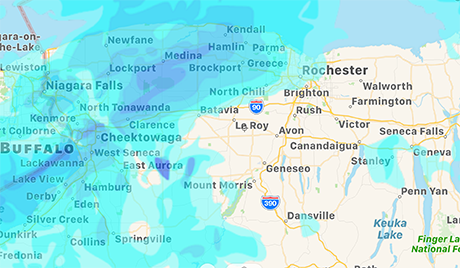There are as many as 897 people in Genesee County leaving as much as $8,150 on the table each year simply because they're not completing the right IRS or state forms when they file their tax returns.
The money is what's called an Earned Income Tax Credit and the program is one many economists believe has helped lift millions of people over the past couple of decades out of poverty.
The EITC rewards work and economists say that is the right incentive to get people who can work into jobs that set them on a path toward better lives.
"One of the problems with redistribution of incomes is getting the money to the right people," said Michael Wolkoff, associate chair in the Department of Economics at the University of Rochester. "You want to do it in a way that encourages people to work if you can. ... The problem with general welfare is that it takes some people who can work and provides them with an incentive not to work and that's not what you want to do with welfare policy in general."
The first EITC was enacted in 1975 and the program was revised and expanded in both the Reagan and Clinton administrations.
The program provides a lump-sum payment to qualifying people based on their income from work, even if self-employed, and the formula is designed to encourage poor people to earn more money, growing their income enough so eventually they earn enough and are no longer eligible for the EITC.
As Wolkoff explained, it turns the value of a job that pays $10 an hour into one that might be worth $12 an hour for the wage earner.
If there's one flaw with the program, Wolkoff suggested, it might be the nature of the lump-sum payment, which isn't an immediate payoff for the actual extra work at the time of the work, and social science tends to show that incentives work best when rewards are given in proximity to the goal behavior.
To the degree that's an issue is hard to determine, but a program that allocated money over the course of the work year would be much more expensive to administer, Wolkoff said.
Even so, numerous studies over the years show that program is successful in making lives better for millions of people across the nation:
- Children in families receiving the credit tend to do better in school and they are more likely to attend college;
- More single mothers have transitioned from public assistance with the help of the program and tend to earn more money later in life than single mothers who don't enter the workforce through the program;
- Recipients of all types tend to earn more money later in life;
- In one year, 2013, 9.4 million people were lifted out of poverty, including 5 million children; and 22 million people were less poor.
The ability of people earning more money after participating in the program is a result of those people gaining work experience, new skills and on-the-job training, Wolkoff noted.
The program is designed to provide the greatest benefit to workers with children. For example, a single adult won't receive more than $506 from the federal government, but a family with three or more qualifying children will receive $6,269. The worker with no children can get another $152 from the state and for the family with three children, the state kicks in another $1,881.
Those amounts are also scaled by the individual's amount of earned income each year.
In New York, nearly 1.9 million people received the state's EITC last year, for a total payout of state and federal credits of $5.4 million.
In Genesee County, the IRS reports there were 4,350 people receiving state and federal credit. That led to an additional $11.4 million flowing into the local economy. The average payout for qualifying Genesee County residents was $2,675 in state and federal credits.
But then there are still those 897 local residents who qualify for the credit but didn't apply last year, according to IRS. For New York as a whole, there are 383,000 residents who didn't apply.
The state put out a press release on Friday to help raise awareness of the program because the program is such a proven success for lower-income people willing and able to work.
"I think looking at that last column of figures (the 383,000 not getting the credit), there are hundreds of thousands of people across the state who are not claiming that credit and that's reason enough for us to do all we can do to boost awareness," said James Gazzale, a spokesman for NYS Taxation and Finance. "This is cash that counts for families so they can go out and pay bills, put food on the table, pay for school supplies, pay for all the necessities we sometimes take for granted. All of these families that are eligible and not claiming it, it can be a big boost for them."
For more information
• Federal Earned Income Tax Credit
• New York State Earned Income Tax Credit
• Recordkeeping suggestions for self-employed persons
• Contact a NYS Tax Department representative at (518) 457-5181




























